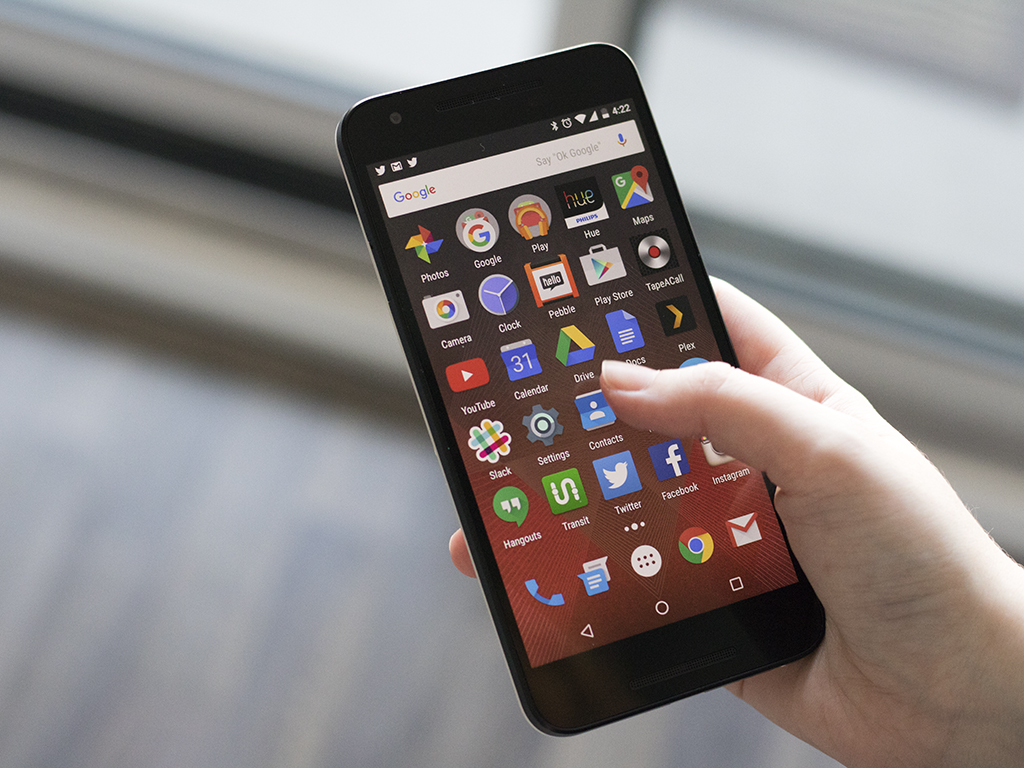
Google’s and LG’s Nexus 5X is my favourite Android smartphone currently on the market, and a worthy successor to the now two-year-old Nexus 5. It also marks a return to what Google’s Nexus line of devices was focused on prior to the release of the Nexus 6 in 2014: releasing affordable, reasonably priced, mid-range, stock Android smartphones.
Similar to past flagship Nexus devices, the Nexus 5X is ahead of the devices in its price range in terms of aesthetic and build quality, with its closest rival being the critically acclaimed Moto X Play.
The Nexus 5X’s improved hardware, larger battery and 12.3 megapixel back camera combine to ensure the smartphone is a worthwhile purchase for anyone still clinging to their rapidly aging Nexus 5.
However, while the Nexus 5X’s hardware has been improved, one shouldn’t mistake it for a high-end device, instead falling firmly into mid-range territory.
This year, Google launched two new flagship Nexus devices, the LG-manufactured Nexus 5X, and the considerably more powerful (and expensive) Huawei-made Nexus 6P. Each smartphones is a successor to the Nexus 5 and Nexus 6, and both are iterative updates over their predecessors, with two very different audiences in mind.
I’m pleased with the upgrades featured in the Nexus 5X when compared to the rapidly aging Nexus 5, but whether or not the 5X is the right smartphone for you will depend on a variety of factors, particularly if price and performance are primary considerations.
Specs
- Android 6.0 Marshmallow
- 5.2-inch IPS LCD display (1080 x 1920), 423 ppi
- Qualcomm Snapdragon 808 SoC, Adreno 418 GPU, Gorilla Glass 3
- 2GB of RAM
- 16GB/32GB internal storage options
- 2700mAh battery
- 12.3 megapixel rear camera, F2.0 lens, 1/2.3 camera sensor, HDR+
- 5 megapixel front-facing camera
- 4K video at 30fps
- Wi-Fi, 802.11 a, b, g, n, 5GHz, ac
- 147 x 72.6 x 7.9mm
- 136g
- Nexus Imprint fingerprint scanner
- LTE FDD 17, 28, 18, 19, 20, 5, 8, 4, 3, 9, 2, 1, 7
Low-end price with a (mostly) high-end feel

One of the most shocking things about the Nexus 5X is how much the phone weighs. When compared to the iPhone 6s, HTC One M9, or Samsung Galaxy S6 – three smartphones I’ve used for considerable periods of time over the last few months – the Nexus 5X is incredibly light.
Initially, I thought the 5X was lighter than its predecessor, but surprisingly it isn’t. The Nexus 5 weighs in at 130 grams, and the Nexus 5X is actually slightly heavier at 136 grams, although when holding each smartphone in both hands, the difference is negligible. The newer Nexus just feels more well balanced.
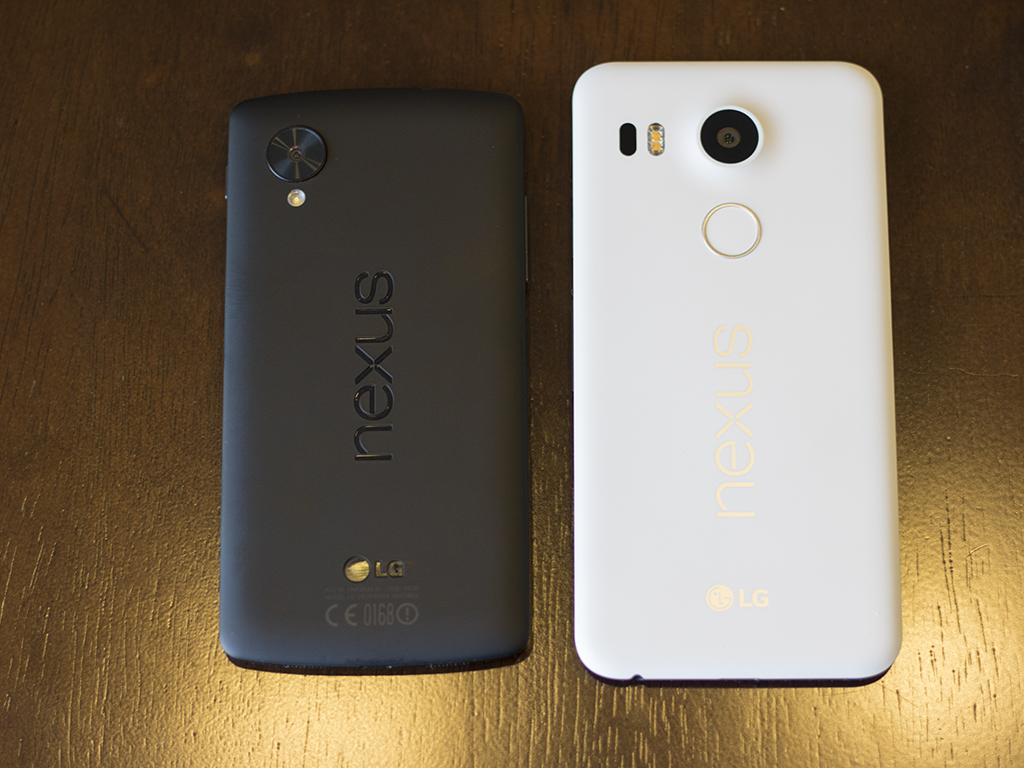
At 5.2 inches, the Nexus 5X’s screen size has been boosted slightly over its predecessor, bringing its IPS display more in line with larger devices that have grown in popularity over the last few years.
While a 0.25-inch size increase might not seem significant, in real-world usage it is. The additional screen real estate makes web browsing, gaming and even simple tasks like typing easier to perform on the Nexus 5X. And those not fond of phablet style smartphones will also be pleased to know the 5X can easily be used with only one hand, unlike the Nexus 6P, iPhone 6s Plus, and Galaxy Note 5, as well as many other devices released in the past year.
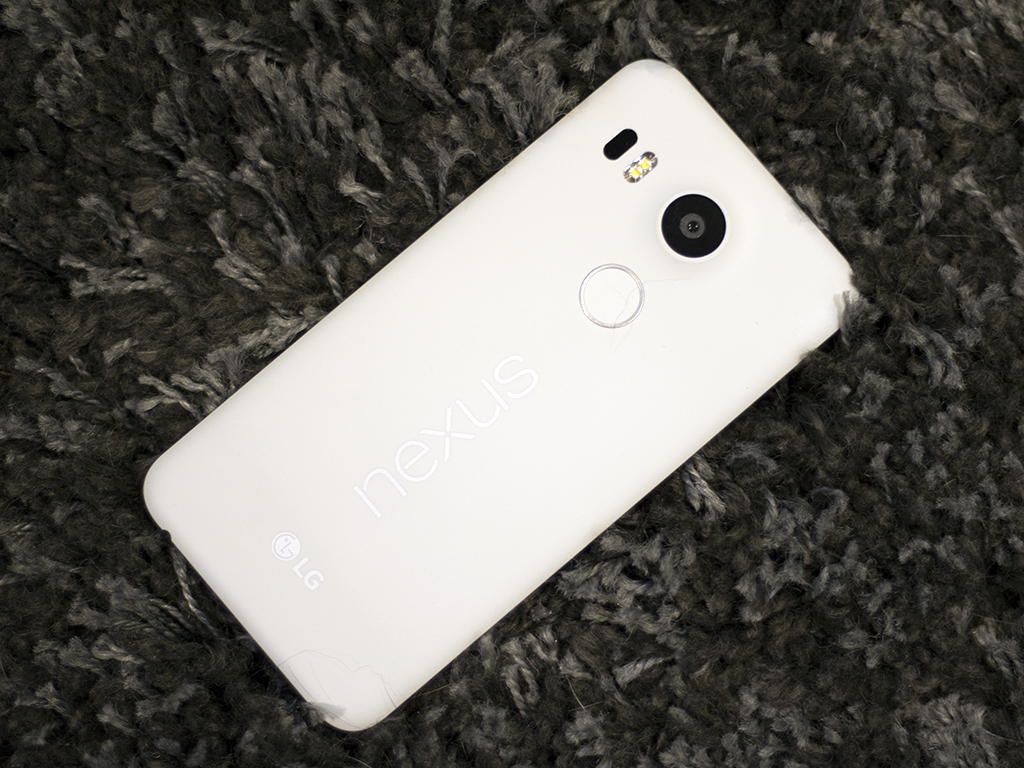
Furthermore, despite the 5X’s plastic build, it’s the first smartphone I feel comfortable using without a protective case. The Nexus 5X might not feature the premium build you’d find featured in the high-end iPhone 6s or Samsung Galaxy, but it certainly is one of the most resilient smartphones I have ever used.
My Nexus 5X review unit took a few accidental tumbles onto the hard, tile floor of my bathroom over my two weeks with the device, and is completely unscathed.
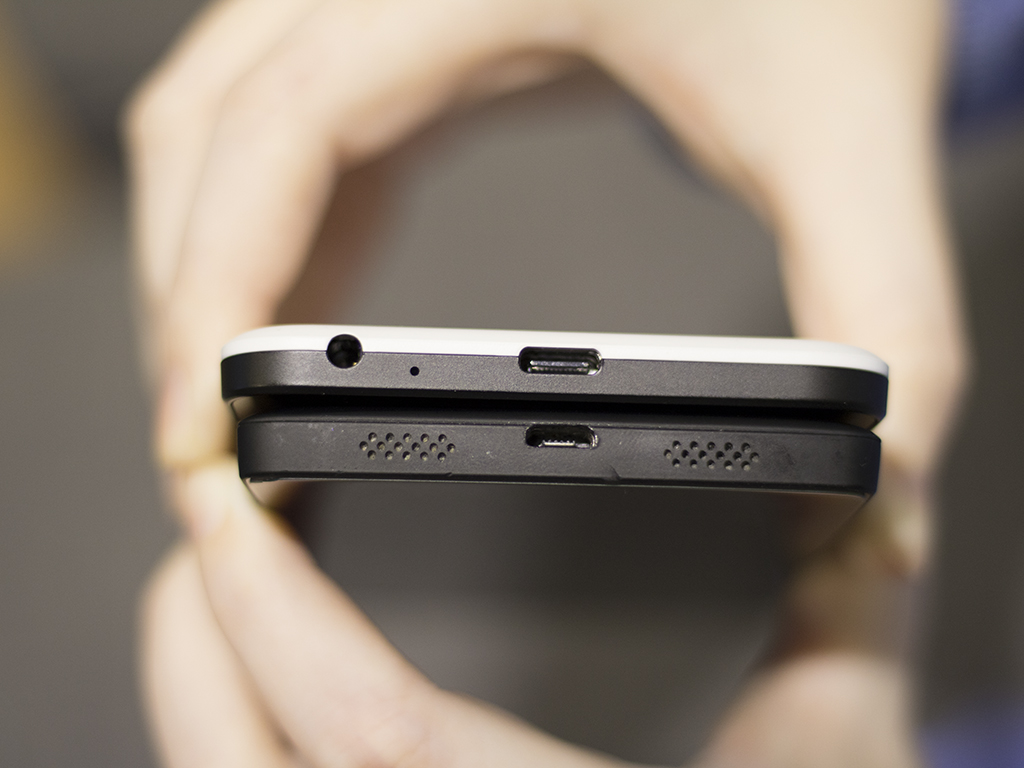
Its rubberized plastic finish also makes gripping the device easy, and ensures the greasy fingerprints that commonly show up on the Nexus 5’s backing, are an issue of the past.
And a small ridge around the the front of the phone’s display, while serving no practical purpose, gives it a unique tactile feel I haven’t experienced with other Android devices (the ridge is similar to the rim around the 5X’s fingerprint scanner).
Other notable new design features include a slight bulge where the Nexus 5X’s camera protrudes from its body, a common design feature included in most modern smartphones; a Nexus Imprint fingerprint scanner (more on this later); and a USB-type-C Port.
It’s also important to note that while the Nexus 5X’s on/off switch and volume rocker feel tighter when compared to the Nexus 5’s, they still wobble in the phone’s body, making both buttons sometimes difficult to press. Additionally, while USB Type-C is the future of connectivity, the technology is inherently controversial because it hasn’t become mainstream yet. It’s unlikely many people have extra USB Type-C adapters laying around, and this could pose a problem, since the box only comes with a Type-C to Type-C cable.

The Nexus 5X’s speaker is also located bottom of the phone’s face, instead of at its base like in the Nexus 5. While I rarely listen to music or audio directly through my smartphone, instead opting for external speakers, the Nexus 5X, when compared to the Nexus 5, is able to output at greater volume, without distorting sound.
My sole complaint about the Nexus 5X’s build is that when tapping the phone, or grabbing it firmly, I could often feel a minor shake or vibration. I wasn’t able to pinpoint the source, but it is likely the 5X’s internal vibration motor jostling around (the same component that powers the 5X’s excellent haptic feedback).
This vibration isn’t a significant issue, but is still worth noting because it’s the type of problem commonly found in mid-range phones like the Nexus 5X, and acts as a constant reminder Google and LG’s latest smartphone is manufactured at the most cutthroat of margins.
Great specifications at an affordable price
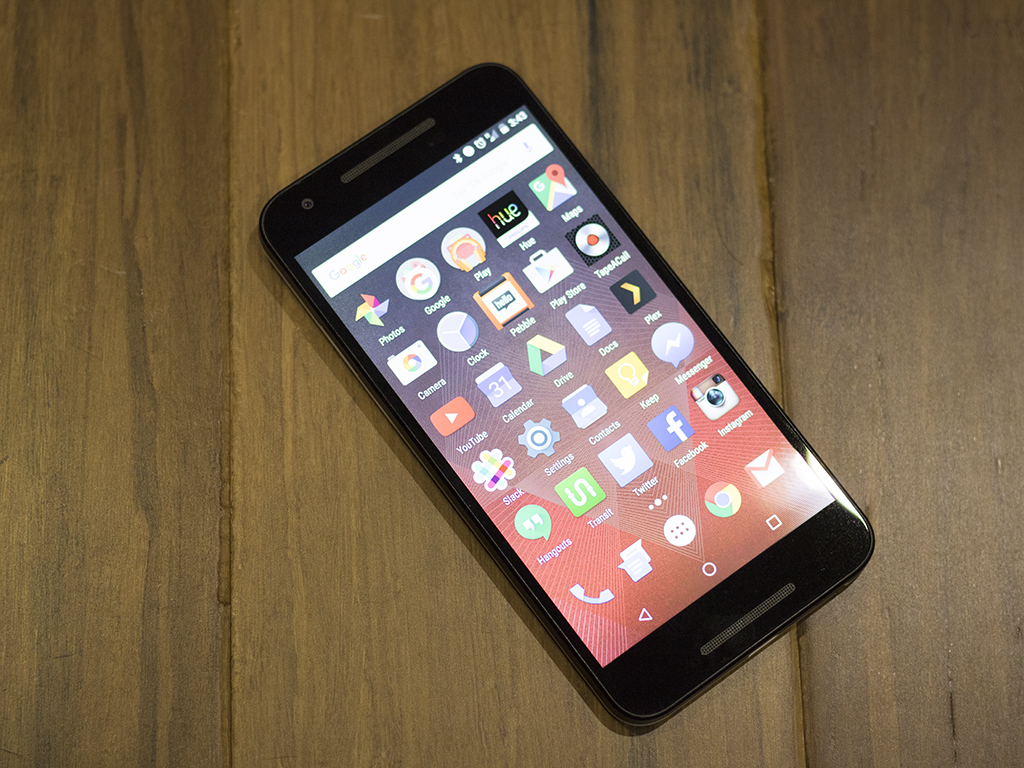
The best thing about the Nexus 5X is its impressive technical specifications, especially when the smartphone’s $499 CAD price tag is taken into consideration.
The Nexus 5X’s 5.2-inch 1080 x 1920 pixel IPS display, featuring 424 pixels per inch, is a joy to look at despite its moderately lower resolution compared to higher-end smartphones like the Nexus 6P. The screen’s viewing angles are impressive, unless you’re using the 5X in direct sunlight, and colours pop from its display with a vibrancy that wasn’t present in the Nexus 5 and Nexus 4.
Under the hood, the Nexus 5X is equipped with a hexa-core Qualcomm Snapdragon 808 processor, an Adreno 418 GPU and 2GB of RAM. In comparison the Nexus 5 utilizes a Qualcomm Snapdragon 800, so the 5X’s processor is a significant improvement over the hardware featured in its predecessor.
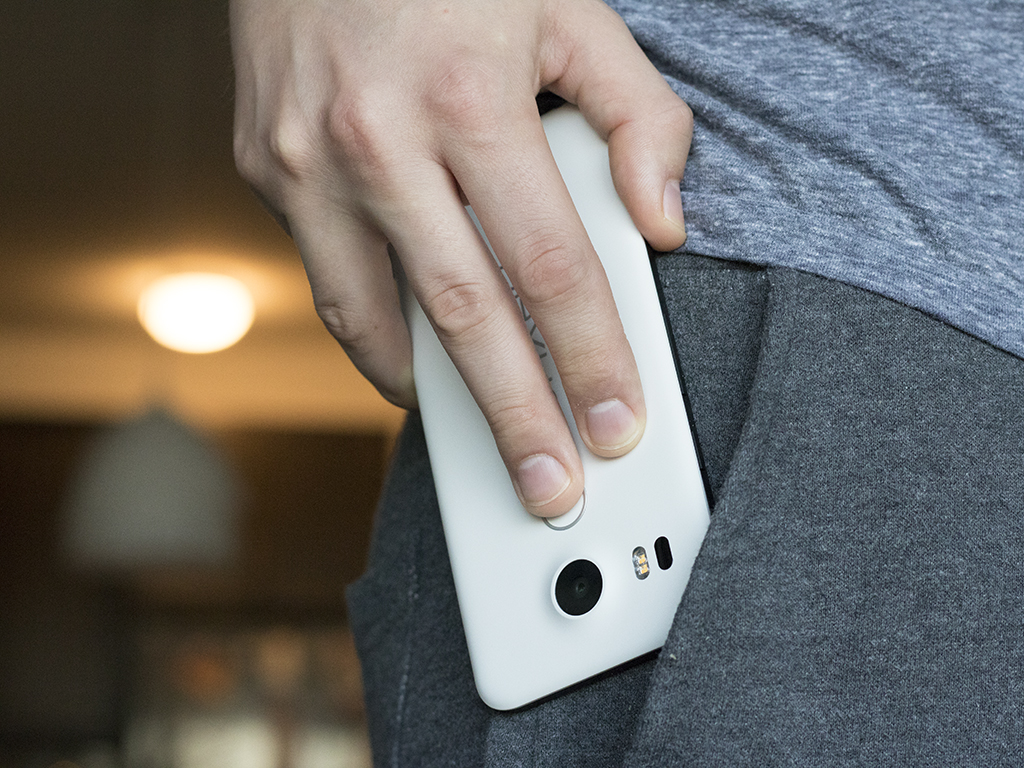
While the Nexus 5X’s 2GB of RAM initially seems like a problem given that many Android devices, even mid-range ones, now feature 3GB, save for a couple of minor hiccups while launching Marshmallow’s stock camera app, as well as using Google Now on Tap and high-end, resource intensive games, I ran into few slowdowns. With that said, though, an additional 1GB of RAM would have been welcome on the Nexus 5X.
One of my favourite Nexus 5X improvements over the Nexus 5 is its larger 2,700 mAh battery, which helps the smartphone last over the course of an entire day. During my roughly two weeks with the 5X I didn’t need to plug it in for a top up while at work or in the evening at home, instead opting to only charge the smartphone overnight. It seems that even with heavy use, the Nexus 5X’s improved 2,700 mAh battery, an increase of 400mAh over the Nexus 5’s 2,300mAh cell, is a significant improvement.

Then there’s the Nexus Imprint fingerprint scanner, a feature also included in the more expensive and higher-end Nexus 6P. While I initially thought the 5X’s fingerprint scanner was silly and wouldn’t work as well given its placement on the back of the smartphone, I quickly realized I was wrong.
Because the Nexus Imprint is located on the Nexus 5X’s back, if the smartphone is placed in a pocket face down and pulled out with a single finger on its backside (that has also been setup with Nexus Imprint), access to the 5X is almost instant.
The ability to add a number of fingerprints means the same finger does not need to be used each time you want to access the phone. The setup process for Nexus Imprint is also quick and simple.
Vastly improved camera performance that still lags behind the competition

One of the most significant updates to the 5X is its new, 12 megapixel back camera. This is the same camera featured in the Nexus 6P and is the best ever to be featured in a Nexus device. The 5X’s front camera also performs admirably under various lighting conditions, although it only measures in at 5 megapixels. In comparison, it’s larger brother, the Nexus 6P, features an 8 megapixel front-facing selfie sensor.
The 5X snaps superb photographs in natural light, similar to the Nexus 5, but is a monumental improvement over its predecessor when it comes to low-light photos, especially those shot indoors. However, it’s important to note that while the Nexus 5X’s photography capabilities come dangerously close to matching Apple’s current mobile phone camera supremacy, the iPhone 6s’ 12 megapixel camera still performs better in low-light, especially when it comes to colour saturation and detail.
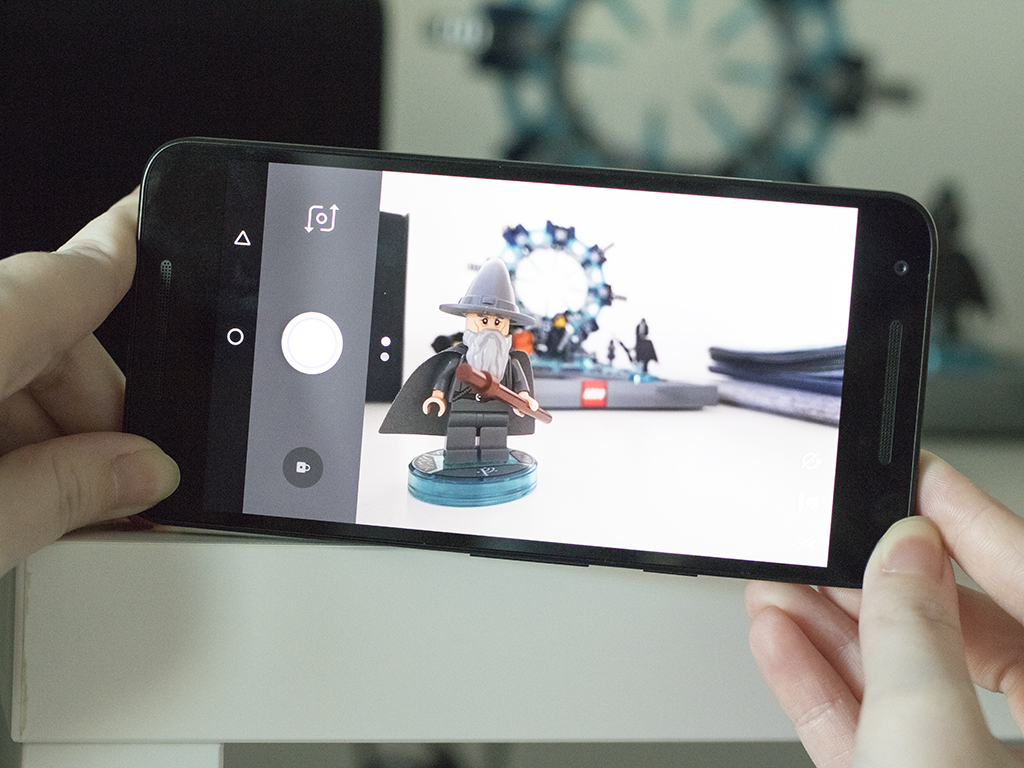
When comparing low-light images shot with the iPhone 6s and Nexus 5X side by side, more noise is found in the Nexus 5X’s image, and slightly less detail. However, unless you’re closely analyzing the two, you won’t notice a difference. With that said though, in my testing, the 5X’s camera features better white balance.
The addition of a high dynamic range (HDR+) mode in the 5X is also welcome when used under specific circumstances, helping to ensure photos have improved contrast without washing out areas of high exposure. However, I found I rarely used the feature since it extends the shutter time, often causing subjects to blur.

Nexus 4 and Nexus 5’s camera was so bad that I often didn’t bother taking pictures while using both smartphones as my daily device over the last few years, but the same definitely cannot be said about the Nexus 5X’s photography capabilities. Regardless of what lighting conditions images are taken under, most people are going to be more than satisfied with the pictures the 5X captures.
One important issue worth noting is how slowly the Nexus 5X’s camera app loads. I also encountered the occasional frustrating crash, especially when attempting to snap a photo quickly. The 5X also lacks the intelligent burst mode present in the 6P.
Start a campfire – welcome to Marshmallow
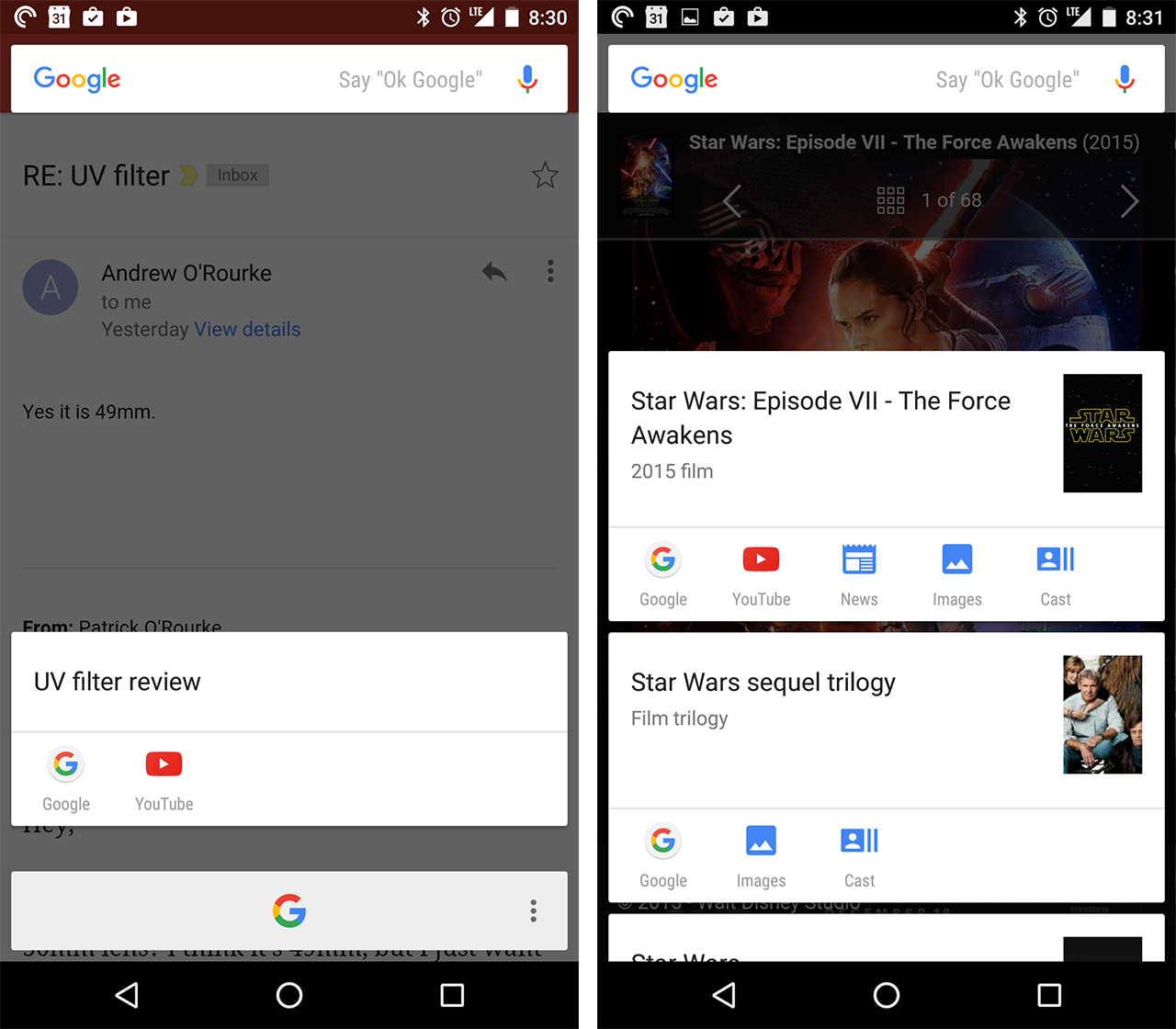
Despite the hype surrounding Android 6.0 Marshmallow’s release, beyond a cleaner, brighter user interface, I’ve noticed few changes to Google’s new mobile operating system.
Standout additions include a new Marshmallow feature called Doze, which works well for saving battery life, especially when you know you won’t be using your Nexus 5X for a number of hours. Doze puts the smartphone in a battery saving sleep state when it remains stationary for an extended period of time, and is perfect for saving battery life when the 5X is not in use.
Then there’s Google Now on Tap. While I didn’t find Marshmallow’s other new feature particularly useful, Now on Tap’s contextual search options are efficient and responsive, allowing users to search for information related to content displayed on the Nexus 5X’s screen, whether it’s an app or web page.

For example, if you’re looking at an email about a movie you’re planning to go see with a group of friends, simply hold down the 5X’s home button and a detailed card about the theatre’s location, as well as the movie in question, will appear.
So while these particular Android Marshmallow enhancements might not personally appeal to me, they’ll certainly appeal to a number of people.
The Nexus 5X is an affordable, stock Android experience
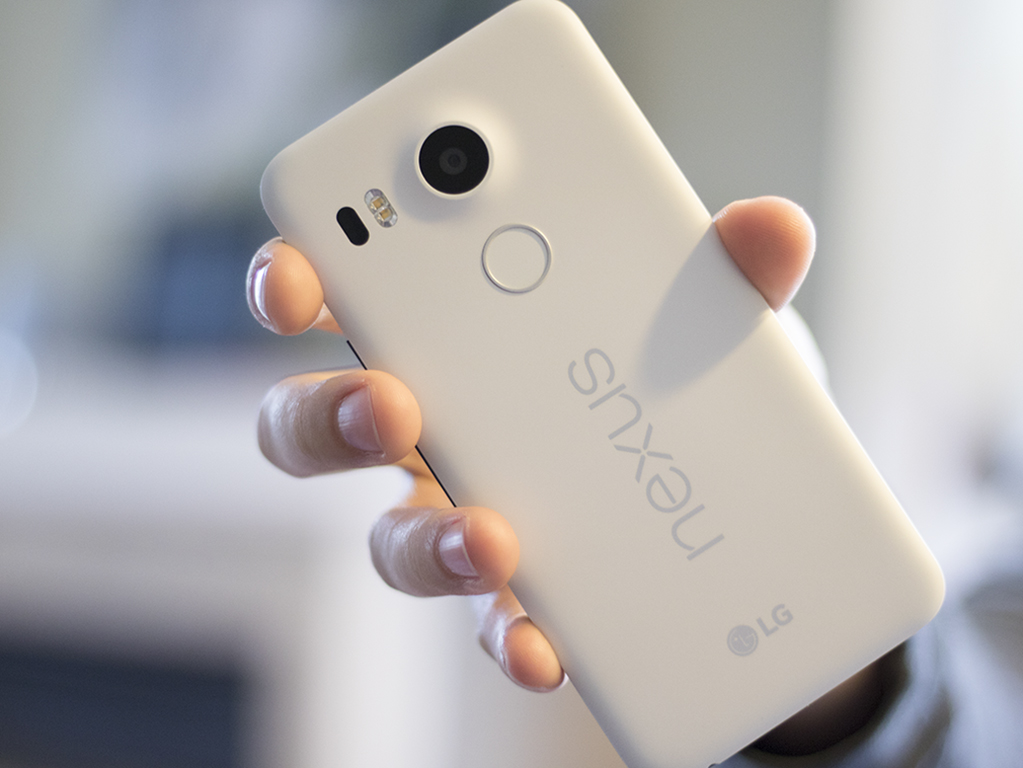
At $499 for the 16GB version of the Nexus 5X and $559 for the smartphone’s 32GB iteration, Google’s latest Nexus device is still on the pricey side. But in an industry where dropping $500 for a mid-range device has become the norm, Google’s latest device is ahead of the competition, even when compared to the superb Moto X Play in terms of build quality, justifying the Nexus 5’s price tag.
Furthermore, the fact that the entry level 32GB Nexus 6P is priced at $699 makes the 5X significantly more appealing for price conscious individuals seeking a stock Android experience.
The 5X’s upgraded camera, improved build quality and impressive looking screen combine to create a smartphone package worth buying.
The smartphone comes in three different colours: blue, black and white.
Pros
- Price tag is appropriate
- Features excellent build quality
- Provides the best stock Android experience available (other than the Nexus 6P)
- Will receive all Android OS updates first
- Camera is great and a huge improvement over the Nexus 5
- Excellent battery life
Cons
- Issues with camera software
- Still a little pricey for a mid-range device (this is the new normal though)
- Strange vibration occasionally felt when touching the phone
MobileSyrup may earn a commission from purchases made via our links, which helps fund the journalism we provide free on our website. These links do not influence our editorial content. Support us here.



